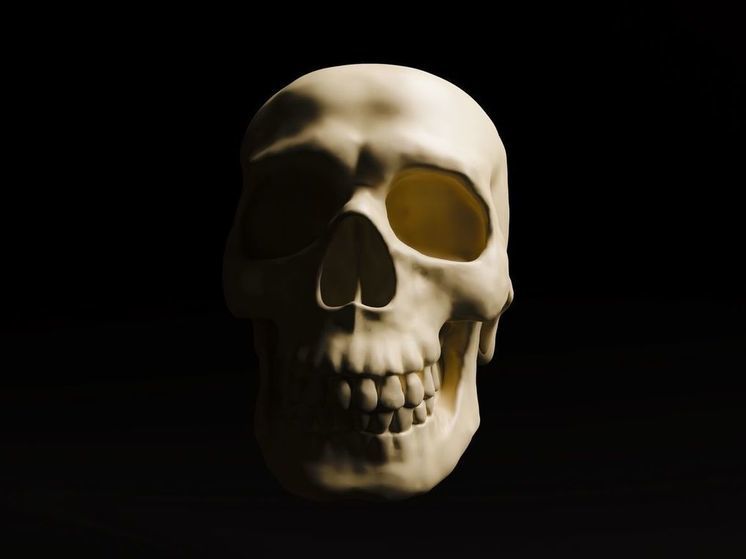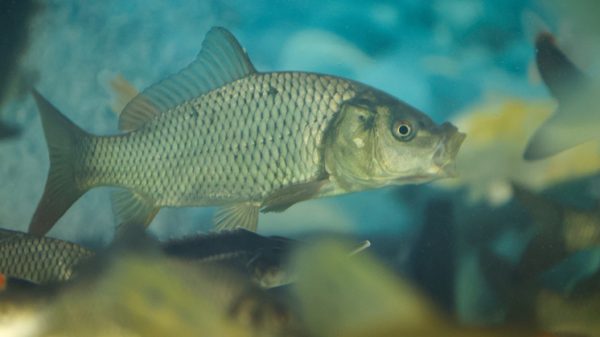Palaeontologists' discovery may help solve an evolutionary puzzle
Palaeontologists from the Smithsonian's National Museum of Natural History have discovered a previously unknown prehistoric species — a 270-million-year-old amphibian with wide eyes and a cartoonish smile.

According to CNN, the find was named after Kermit the Frog – Kermitops gratus has emerged as the latest ancient amphibian to be identified after studying a tiny fossilized skull that once remained unexamined in the Smithsonian Institution's fossil collection for 40 years, according to a paper published in the Zoological Journal of the Linnean Society.
A pre-dinosaur species, Kermitops is believed to have roamed what is now Texas during the Early Permian era, 298.9-272.3 million years ago. The skull of the ancient amphibian is just over an inch long (about 2.5 centimeters) and is distinguished by large oval eye sockets and — due to his slightly crushed state — a wry smile that researchers said reminded them of a character from The Muppet Show.
The discovery of a new species of amphibian could provide some answers to the question of how frogs and salamanders evolved to acquire their special characteristics today, the authors write in the paper.
“One thing that Kermitops does show is that the origins of modern amphibians are a little more complex than some studies have shown,” says study co-author Arjan Mann, a paleontologist at the Smithsonian National Museum of Natural History. – And it does mean that people need to continue to study these things, because just looking at museum collections like this fossil could potentially change the way we think about evolutionary hypotheses about the origins of living things.
The fossil was first discovered in 1984 by the late Nicholas Hotton III, a museum paleontologist who was excavating fossils from the Red Beds in Texas, an area known to be rich in Permian remains, CNN notes.
Researchers have unearthed the remains of ancient reptiles, amphibians and synapsids, the predecessors of mammals. The resulting collection included so many finds that paleontologists were unable to study a number of specimens, including the newly named Kermitops. That all changed in 2021 when the skull caught the attention of Mann, then a graduate student who was sifting through the Texas collection to see if any noteworthy specimens had been overlooked.
“Not only was the skull well-prepared by someone, but it had features that set it apart from anything else in the group that I had ever seen,” Mann says. In early 2023, Calvin So, the lead author of the new paper and a doctoral student at George Washington University, began studying the skull for his doctoral work.
Kermitops is not classified as a frog because the prehistoric amphibian did not have all the same features and anatomy found in modern frogs. But the researchers determined that the specimen belonged to the temnospondyls, which are believed to be the most common ancestor of all lissamphibians — category that includes frogs, salamanders and caecilians, Mann added.
The researchers noted several similarities between the ancient amphibian and its modern relatives, including a similar location of the eardrum at the back of the skull, a small opening between the nostrils that secretes a sticky mucus that helps the frogs catch their prey, and even evidence of unique, bicuspid, stalked teeth. to amphibians and are found in most modern amphibian species.
The presence of teeth and other modern features of this prehistoric species could help researchers better understand the evolutionary transition that amphibians went through to acquire their unique features, such as teeth, today. A June 2021 study found that some frog species lost and regained teeth multiple times throughout their ancestry.
“This work is important because it provides another distinct early distant relative our modern amphibians,” explains David Blackburn, co-author of the 2021 study and curator of amphibians and reptiles at the Florida Museum of Natural History at the University of Florida.
“Over the past 20 to 30 years, many new species of these distant relatives have been discovered and described, and each discovery tends to change our knowledge of the evolutionary tree,” Blackburn added.
But Kermitops had many features that distinguish it from its modern relatives. The creature's robust skull had additional bones and features that were likely lost with evolution, and its elongated snout, combined with a short skull area behind the eyes, was unique to the species, most likely serving to aid in catching insects.
The fossil's features, a combination of modern and prehistoric features, support previous suggestions that amphibian evolution was complex, says Mark Jones, curator of fossil reptiles at the Natural History Museum in London.
“This further increases the diversity of early Permian animals that are likely evolutionary relatives of modern amphibians. «This highlights the need for more fossils from the late Permian,» Jones said, adding that he liked the amphibian's name. — It's not a frog, but technically neither is Kermit. It has five toes and a frill like a lizard.
According to a press release from the Smithsonian Institution, the early fossil record of lissamphibians is considered fragmentary and is largely attributed to the creatures' small size and delicate bone composition, which makes the fossils difficult to preserve and find it later.
“What we see today is only a small percentage of everything that has lived in the history of the Earth,” added Calvin So. – And one of the conditions that greatly improves the preservation of fossils is their size, because if they are larger, they will be more resistant to some of the erosive forces that we face, such as wind and water erosion.
< p>Moreover, while prehistoric species are generally considered large, Kermitops could help fill a gap in amphibian evolution by explaining how some of the modern creatures acquired their small size.
The skull of Kermitops is similar in size to that of another well-known Early Permian amphibian, Gerobatrachus, whose head was about an inch long (2.5 centimeters). But many frogs today have bodies shorter than that length, Blackburn notes.
“You might wonder: Were there really no very tiny vertebrates in the past similar in size to the miniature species today? I bet yes, they existed, but our ability to find them in the fossil record is very difficult,” adds Blackburn.
Calvin So said scientists hope the species name will draw attention to the remarkable discoveries that paleontologists do by studying museum collections of prehistoric fossils, including some less impressive than dinosaurs. «We wanted to call it Kermitops because we wanted to draw attention to this unique fossil that is really small and that most people wouldn't notice if you put it next to a T. rex in a gallery,» So explains.


























































Свежие комментарии